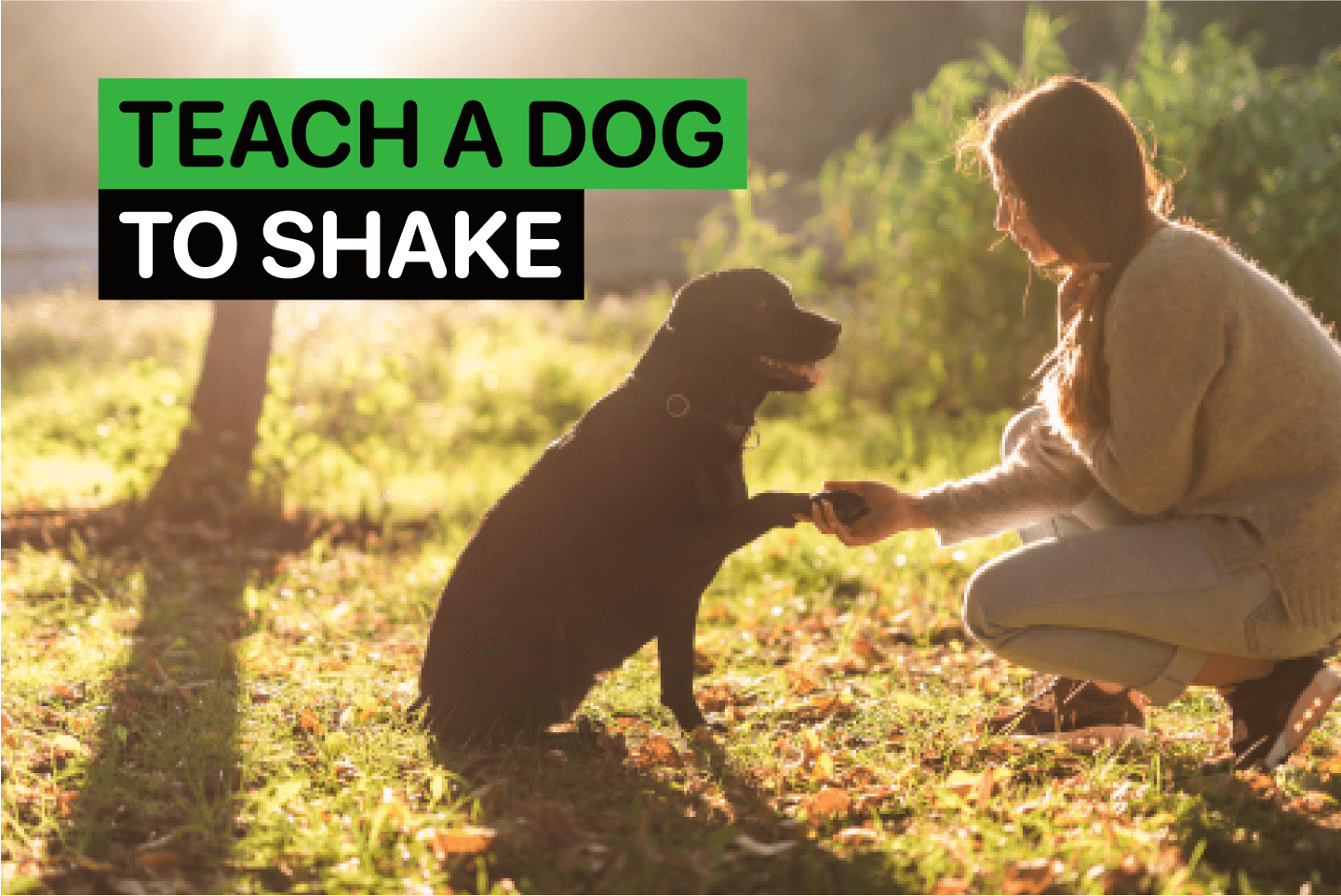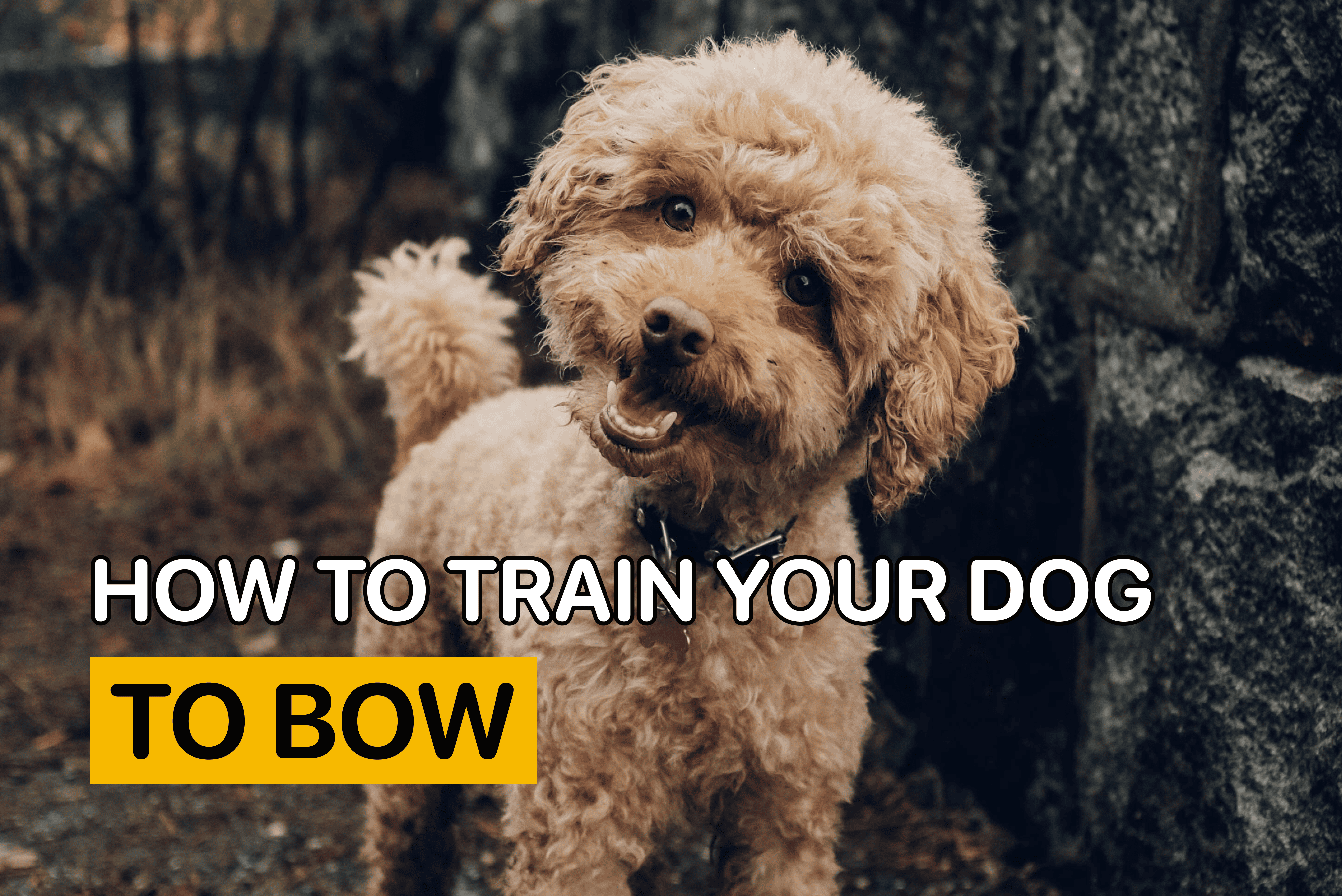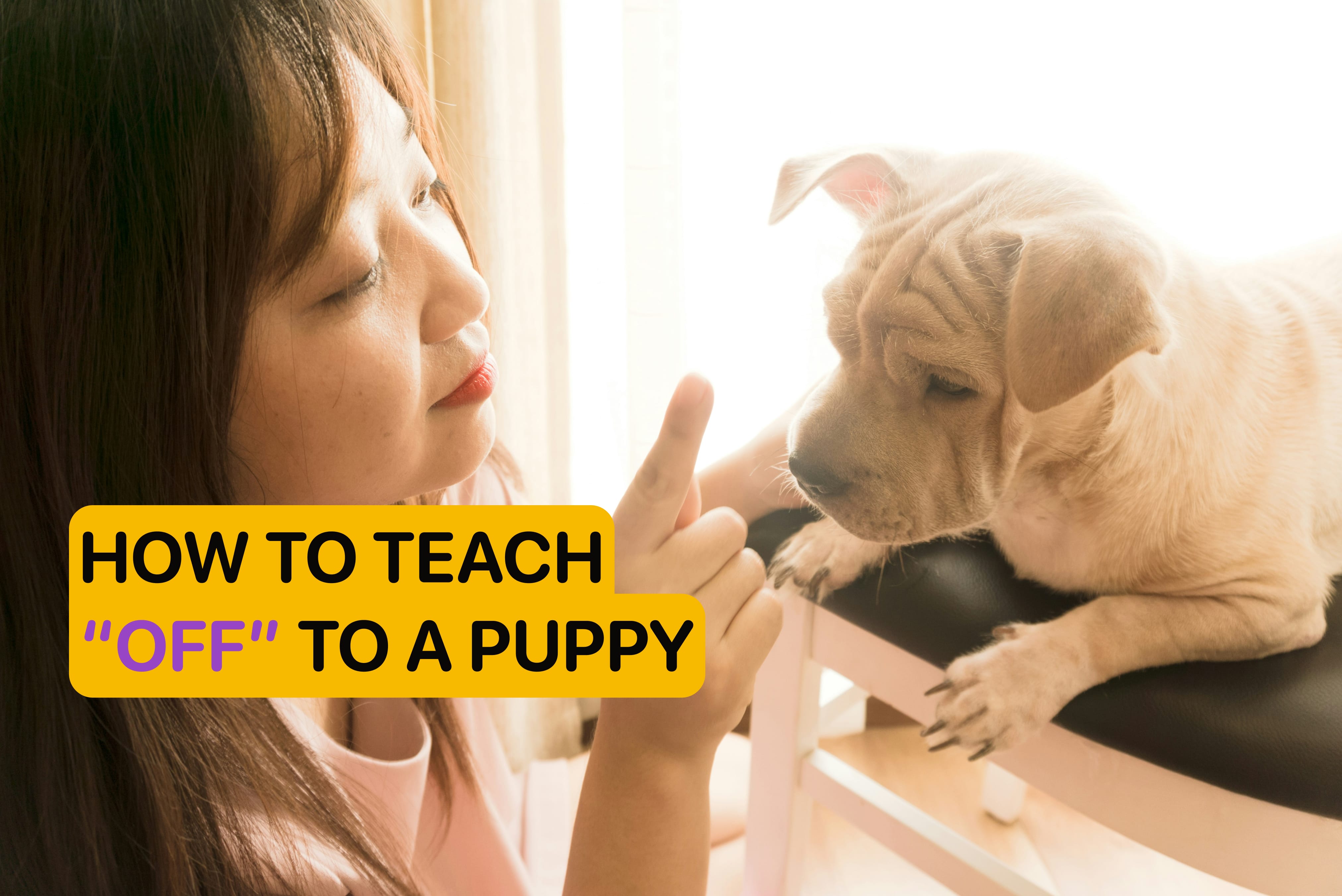How to Teach Paw to Your Dog: All Tips and Tricks Explained

By
Woofz Team Updated on |Reviewed by Frederica Caneiro
What’s the first thing that comes to mind when you hear “a dog trick”? We bet it’s training your dog to give a paw. Giving a paw is one of the most popular and common dog-teaching commands. It’s easy to learn, fun to practice, and helps strengthen the human-canine bond.
If you’re wondering how to teach a dog to give a paw, this blog post is the place to start. Let’s discuss in detail all the tips and tricks of the process and how to teach a paw to a dog in a stress-free way.
Why Should You Teach Dog to Paw?
The paw trick doesn’t have any particular practical significance. While some basic obedience commands can help improve your daily routines and ensure your dog’s safety in various circumstances, teaching your dog to paw is more about entertainment – no wonder some dog owners may feel that teaching such tricks is unnecessary and time-consuming.
Benefits of Teaching a Dog to Paw
-
It improves your skills as a trainer and boosts your confidence.
-
It helps strengthen your bond with the furry friend.
-
It provides mental stimulation that keeps your dog's cognitive abilities sharp.
-
It makes your dog a better learner since daily practice teaches how to respond to the training process. It can be useful if the vet needs to check your dog's paw if you want to clean it with wet wipes or if you need to do any treatment.
Ready to start?
Try our certified training program and teach your dog paw command in a week!
Start now!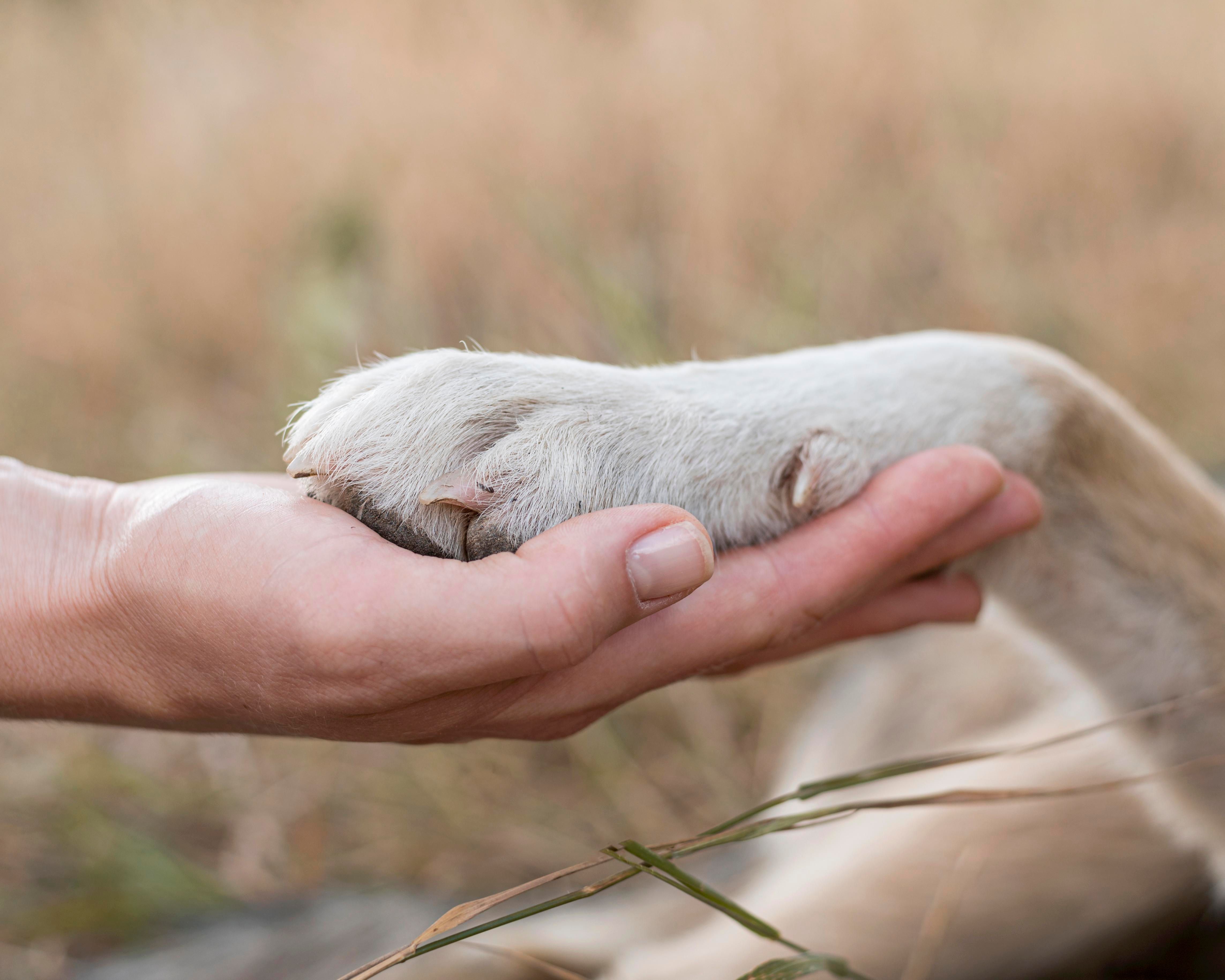
Is There a Right Time to Teach a Dog Giving a Paw?
Some dog owners are hesitant about teaching older dogs new tricks. Others may feel like their puppy is too young to undergo a training routine. However, the truth is that your dog’s ability to learn new commands depends not so much on their age but rather on how strong your bond with the dog is.
Indeed, younger pups, around 6-12 months old, can master new skills faster. So, if you adopt a pup of this age, you can train your puppy to give a paw as soon as they adjust to your place and feel relaxed. Teaching an older dog to give a paw can be slower, but your patience and consistency will guarantee positive results.
How to Start Teaching a Paw to a Dog?
Teaching a dog to give a paw requires minimal equipment. Still, preparing thoroughly and arranging a training spot is essential so your sessions run smoothly.
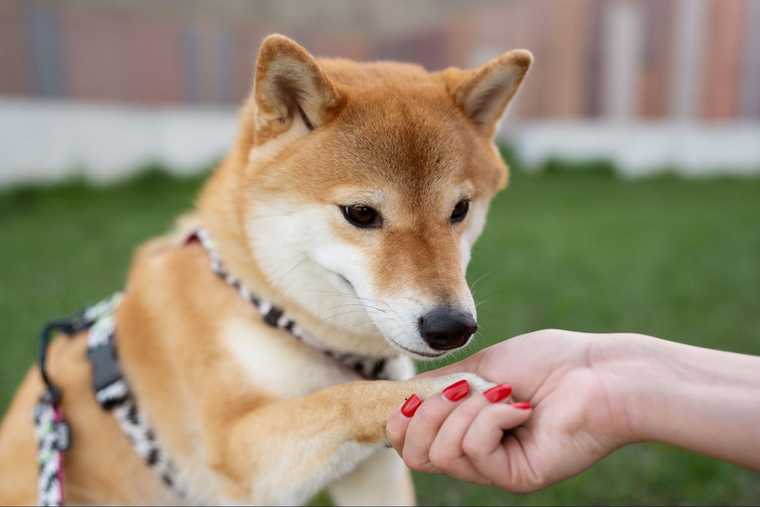
How to Teach a Dog Paw:
-
Choose the right place for training: Your dog should be active but not too energetic. You can do the training after a small walk before their mealtime to increase their focus and motivation.
-
Stock up on treats: You need plenty of treats to use as rewards. Choose something small, healthy, and tasty.
-
Teach your dog the sit command: This command serves as a starting point for giving a paw. If your dog hasn’t mastered it, step back and work on it first, then revisit basic obedience commands.
-
Stay patient: Though the trick is relatively easy, some dogs may need more time to grasp it. Stay positive, patient, and consistent in your training process.
3 Ways to Train a Dog to Give a Paw
We offer a complete overview of three effective methods for teaching a dog the paw trick. The choice will ultimately depend on your preference and how well your dog responds. Remember to keep the training sessions short and practice regularly regardless of the technique.
Method 1: Make Your Dog Think
-
Give your dog the command “Sit!” and reward doing so with a tasty treat and verbal praise. This position will be a starting one for future training. The reward you offer will give your dog a better understanding of why they should cooperate.
-
Keep an empty hand on the level of your dog’s chest. The palm should face up.
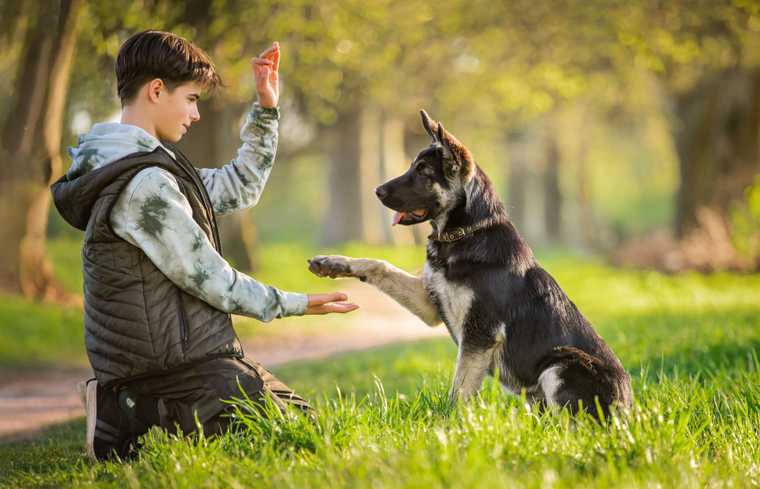
-
Keep the hand in the same position to allow your dog to sniff it.
-
Wait for your dog’s reaction to your open hand. The dog may also try licking it. At this point, the dog starts getting curious about why you keep the palm face up and put your paw in it.
-
If the dog paws your hand, reward the behavior. Praise and treat your dog even if they touch your palm slightly.
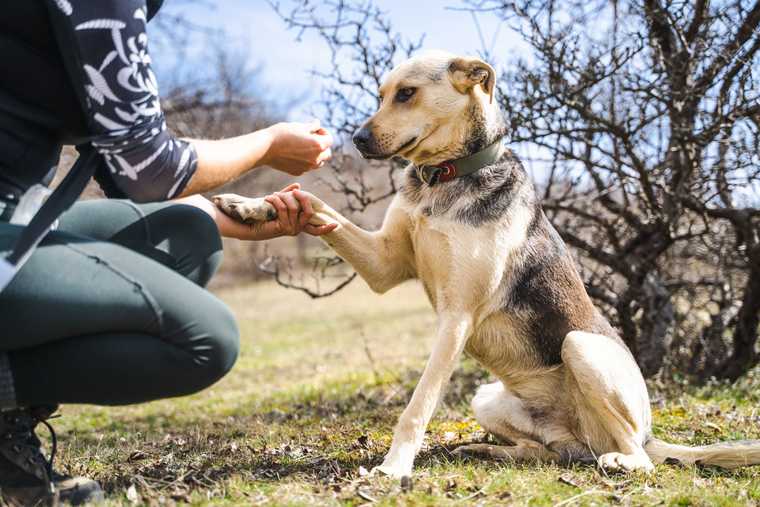
-
Repeat the procedure several times until your dog consistently places a paw in your hand.
-
Add a verbal cue, “Give me your hand,” each time you position your hand near your dog.
-
Practice several times daily and reward each proper response to the “Give me your paw” cue.
Method 2: Tap the Dog’s Paw
-
Make your dog sit and show them you have treats they can earn following your commands.
-
Tap the back of your dog’s paw right below the dew claw.
-
Your dog will react to tapping by trying to move away from your finger. When they do it, pick up the paw and say, “Shake.”
-
Praise and reward your dog for following this sequence.
-
Repeat the procedure several times until your dog paws upon verbal command only without tapping.
-
Reward successful completion of the trick.
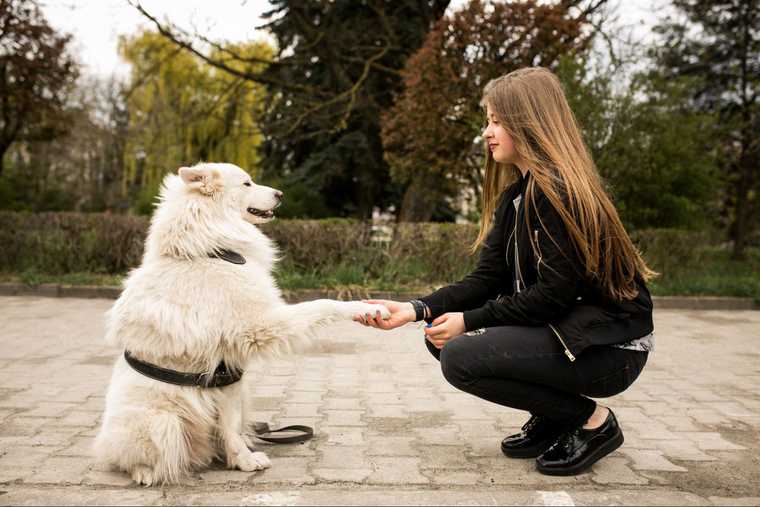
Method 3: Give Me Your Paw
-
With your dog in the sit position, put a closed fist with a treat inside in front of the dog’s nose and allow them to smell it. Don’t let the dog take the treat away.
-
Say, “Give me your paw,” and place your fist under your dog’s nose.
-
Let your dog paw at your hand when they try to get the treat. Once they do it, open the fist and give your dog the treat. Praise your dog verbally.
-
Practice regularly, arranging short training sessions. After some time, your dog will grasp the concept of putting the paw on your hand after hearing the command.
-
When your dog masters the above-described sequence, stop using a treat. Open your hand and say, “Give me your paw!” When your dog shakes hands with you, reward them with a treat you may keep elsewhere, like your pocket or the other hand.
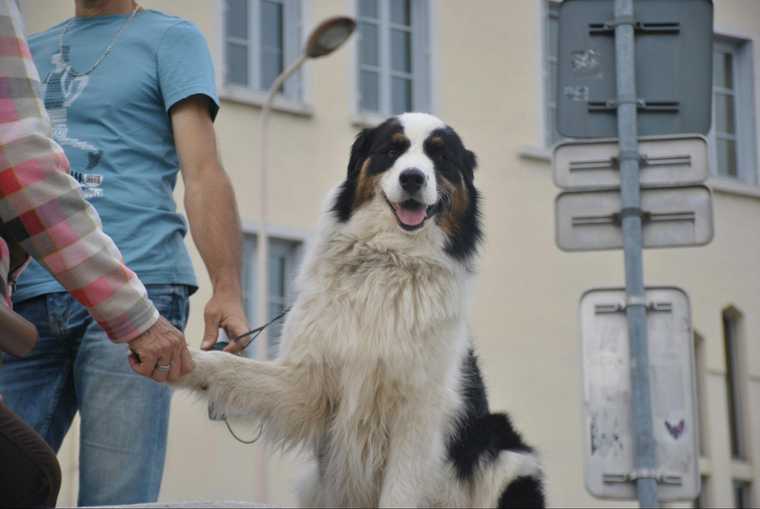
Common Mistakes When Teaching Paw to a Dog
Despite the ease of command, some owners may face difficulties when they train a dog to give a paw. Frequently, this happens due to improper training. If you have trouble teaching paw to your dog, make sure you don’t make the following mistakes.
Things to Avoid When You Teach a Dog to Give a Paw
1. Grabbing and holding a dog’s paw
Never pressure your dog to follow the command or restrict their movement. The idea of the trick is to make your dog offer their paw to you, so you should keep the process fun and comfortable.
2. Long sessions
Long training sessions make your dog tired and lose motivation to practice. The younger a dog is, the shorter their attention span is. So, go with 5-minute training sessions but repeat them daily.
3. You’re training a tired dog
Choose the right timing to make your training sessions as productive as possible. Start when your dog is eager to learn and full of energy. It’s best to arrange the training sessions when your dog is well-rested and full (but not right after a meal). In addition, leave water available at the training location.
4. Going too fast
Even if your dog does well in the first few trials, it doesn't mean they’ve completely grasped it. Go at your dog's pace and make sure they actually understand what you want to avoid frustration from both ends of the leash.
Wrap Up
Teaching paw to a dog is an entertaining and easy way to engage and strengthen your bond with your pup. The trick is not complex for most dogs, but you must arrange training sessions properly. Choose the paw method that suits your training style and your dog’s personality. Stay calm and patient, and remember the ultimate goal of the process – keep it fun!
